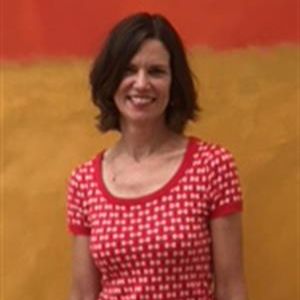
Cindy Ott
Biography
Cindy Ott is an associate professor of history and material culture. Her fields of expertise include American food and culture, environmental humanities, history and memory, material and visual culture, and race and ethnicity studies. Her first book, Pumpkin: The Curious History of an American Icon, published with William Cronon's Weyerhaeuser Environmental Books at the University of Washington Press in 2012, uses this beloved vegetable in all its various guises, from the pie and the jack-o'-lantern to the affectionate term of endearment and the 1000-pound giants, to analyze Americans' long-held and deeply felt veneration of nature and the small family farm and the impacts of those beliefs and traditions on rural communities.
Her current book project, Biscuits and Buffaloes: The Reinvention of American Indian Traditions in the 20th and 21st Centuries Buffalo covers the history of ranching, wheat farming, gardens, rodeo, a 30-year joint project called All-American Indian Days, and the life work of a cook who modernized traditional Crow Indian fare in the fashion of her contemporary Julia Child. Through these stories of the northern Plains Indian communities, Biscuits and Buffalo aims to understand how American Indians have tried to reconcile their experiences in a modern globalized world with persistently romantic expectations of what it means to be Indian.
Through her five-year service as the graphics and Gallery co-editor of the journal Environmental History, she is co-writing a guidebook for interpreting images of people and the environment for the University of Washington Press.
Cindy began her work as a historian in the public section and publically-engaged projects are at the heart of her experience and current work. She is currently developing the Crow Indian Virtual Archive and Museum, is a virtual repository of Crow Indian cultural items and images housed in public and private collections around the world. She has developed cultural history projects and art exhibitions at the Smithsonian Institution and the Museum of the Rockies, community development projects at the University of Pennsylvania and Saint Louis University, and historic preservation projects at the National Park Service. She also served as communications director of Rachel's Network, an environmental nonprofit devoted to the promotion of women environmental leaders. She was the president of the Society of Fellows for the Rachel Carson Center for Environment and Society, based in Munich, Germany, from 2015-2019, and recently on the executive committee of the American Society for Environmental History. Her research has been supported by fellowships from the Fulbright Commission, the Smithsonian, the National Endowment for the Humanities, Stanford University, Harvard University, among others.
Teaching
American Food & Culture studies culture through food production and consumption, investigating mainly American foodways through such diverse topics as labor, science and technology, the environment, the body, race and ethnicity, ethics, and gender, and the ties among them. We will discuss global issues of hunger and obesity, food safety and waste, and private versus public control and responsibility for food choices. The course is designed to press students to consider how humanities, as opposed to science and technology alone, can help us deal with the global challenges of food sovereignty and access, and environmental and human health.

